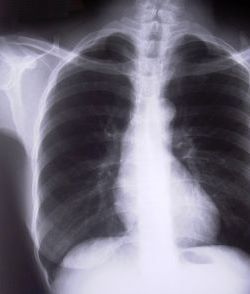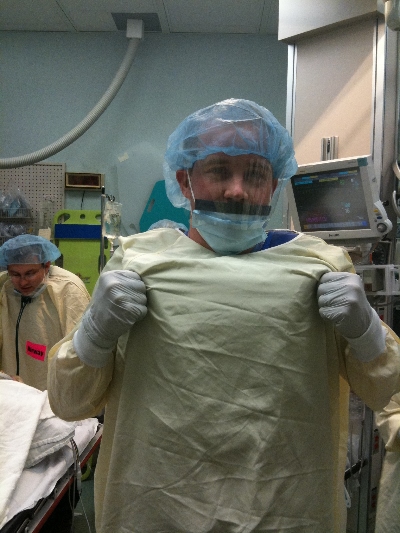Pet peeve time. All trauma team members must wear personal protective equipment (PPE) when they attend a trauma activation. It’s for their own protection as well as our patients’. When I am the primary faculty at any trauma activation, I quickly scan all the other team members to ensure they are wearing it. If not, I give them a “gentle reminder” that they need to go get dressed properly.
This is all well and good. But recently I’ve noticed a trend when it comes time to shoot the basic x-rays needed for assessment (chest and/or pelvic images). When the radiology tech calls out to clear the torso and make sure someone else’s head or hands are not over the patient, half the team goes running out of the room. They are missing one key component of their gear:

Yes, their lead gown! Now granted, the amount of radiation exposure is not huge as I’ve documented in previous posts. But it is cumulative and for safety reasons, x-ray exposure must be limited.

But is running out of room the best way to decrease exposure? I think not! This is very disruptive to the way the team should function and interrupts patient care. Ideally, everyone in the room within 2-3 meters of the x-ray tube should be shielded in some way. And the most effective way to do this is to wear the damn lead gown!
Bottom line: I’ve adjusted my scan when the trauma team assembles. I now look for a lead gown underneath the usual PPEs. And if I don’t see it, I remind the offenders that, if they leave the room when the x-rays are taken, I’m not letting them back in. It’s been very effective at reversing this troubling trend.
In my next two posts, I’ll detail how much radiation the team is exposed to, and how much our patients receive from the studies we order.



